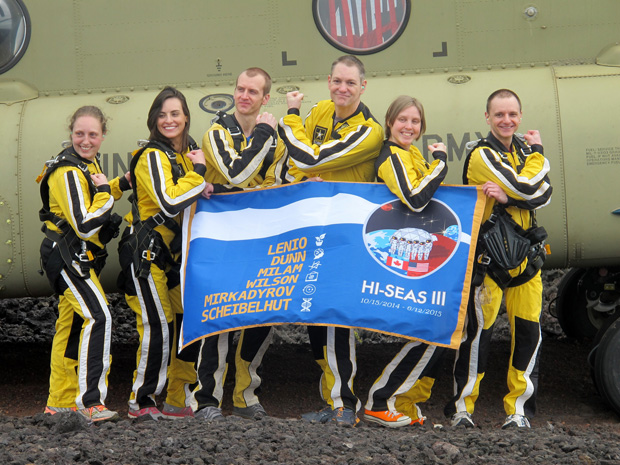On Saturday, June 13, looking pale but smiling broadly, the six crew members of the Hawaiʻi Space Exploration Analog and Simulation or HI-SEAS mission emerged from the dome on the slopes of Mauna Loa where they had been isolated for eight months.
Led by the University of Hawaiʻi at Mānoa, this third NASA-funded HI-SEAS mission was meant to simulate what future Mars explorers might experience during long-duration space exploration—psychologically, socially and biologically.
“A big part of the job is actually socializing with the crew, to be able to stay as a cohesive group and bond, so you have to be prepared for that as well,” said HI-SEAS crew member Jocelyn Dunn. “Despite sort of the isolation, it’s a very intense social situation that you’re around people more than certainly I’ve ever been, and sort of interacting with people all the time takes some getting used to,” added fellow crew member Zak Wilson.
Under the guidance of UH Mānoa principal investigator Kim Binsted, the crew has set the stage for a fourth, year-long mission in August, where new challenges await a new crew. Each mission contributes to groundbreaking research and is an unforgettable experience for all those involved.
“It really was, and it’s an experience I’ll cherish the rest of my life,” said crew member Neil Scheibelhut.
Would they do it all again? Mission commander Martha Lenio said, “I’d definitely do it, for sure.”
When asked what it felt like to be out of the dome, Wilson added, “To feel a little bit of a breeze is something very different.” And what better way to feel the breeze than with a tandem parachute dive, which is how the crew celebrated the end of their mission.


